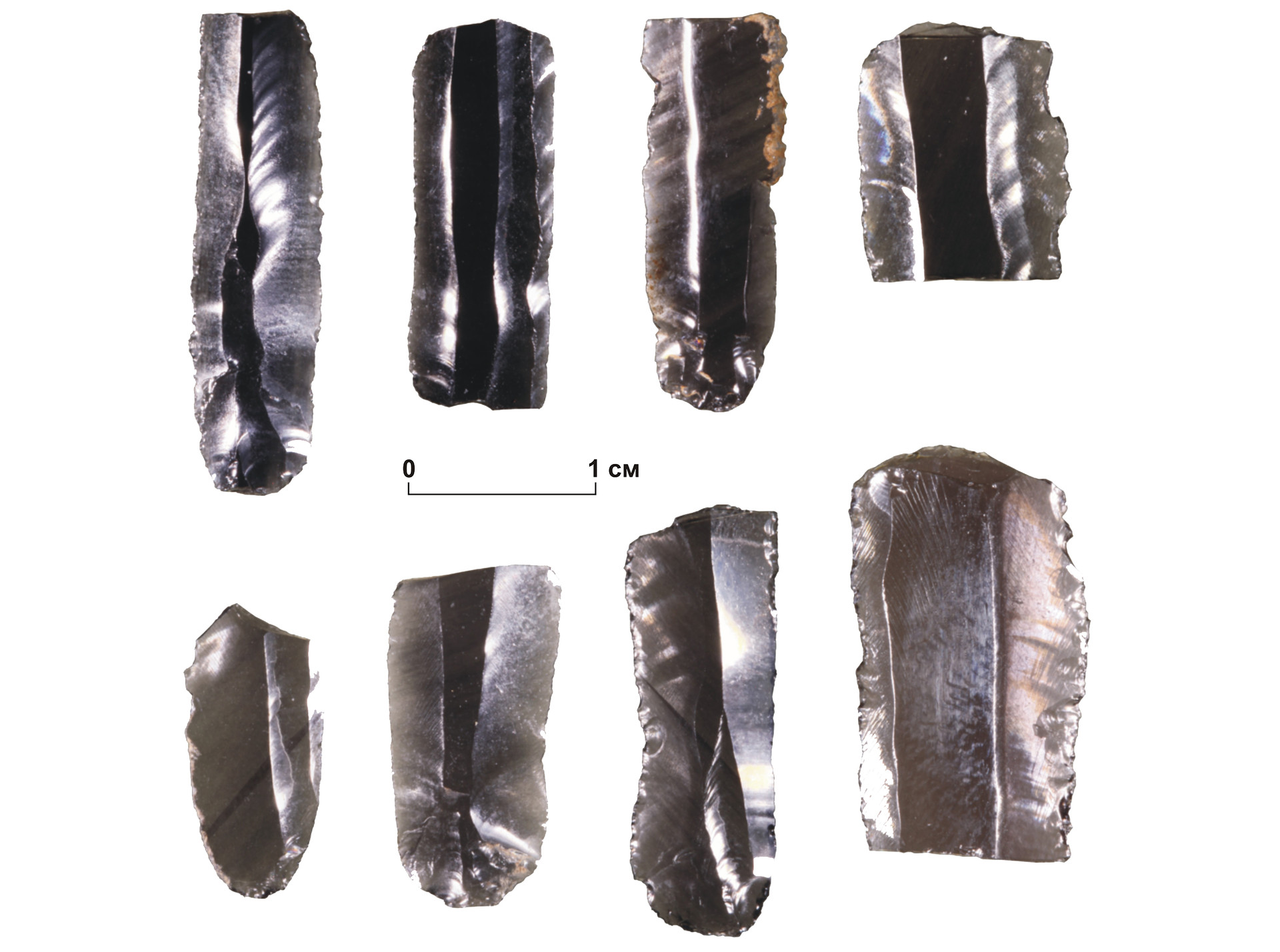The ancient inhabitants of the Novosibirsk Islands at least 9000 years ago established extensive trade relations with the prehistoric monasteries of Chukotka. The staff of the Institute of the History of Material Culture of the Russian Academy of Sciences together with colleagues from the Far Eastern Geological Institute of the Far East Branch of the Russian Academy of Sciences, the Institute of Geology and Mineralogy of the SB RAS and the University of Missouri (USA) came to such conclusions.
Experts studied the finds from one of the sites of prehistoric inhabitants of the island of Zhokhov, located in the archipelago of the Novosibirsk Islands. At the moment, scientists have investigated a significant part of the monument - 571 m². In the course of their work, they found an impressive amount of tools made of stone, bones and wood.
In particular, among stone products, archaeologists discovered a multitude of microplates, which were used as inserts for composite tip and knife blades. Scientists are especially interested in microplates of obsidian or volcanic glass. The fact is that on Zhokhov Island there have never been deposits of this raw material. The nearest source - Lake Krasnoye in the lower reaches of the Anadyr River in Chukotka - is 1,500 km in a straight line, and the real route in antiquity could exceed 2,000 km.
- Products from obsidian from the excavations of Zhokhovskaya site
- © Vladimir Pitulko
Having studied the material from which the obsidian microplates were made, the scientists determined the deposit of the samples found.
“We have established that it is from the area of the Krasnoye Obsidian Lake that I got to Zhokhov Island. It is hard to imagine that the ancient people 9000 years ago made trips to such long distances. Most likely, they met at intermediate points and exchanged products from obsidian, or organized a primitive trade, ”said Vladimir Pitulko, one of the authors of the article, senior researcher at the Paleolithic Department of the Institute of History of Material Culture of the Russian Academy of Sciences.
According to researchers, the ancient people could make their travels on sled dogs, the remains of which were found on the island of Zhokhov, and scientists also discovered the details of primitive sledges. Thus, the islanders, most likely, reached the territories that at that time were still part of the mainland, and kept in touch with their inhabitants.
According to Pitulko, stops in the mouths of the Kolyma and Indigirka rivers could act as intermediate points of contact between the inhabitants of the Zhokhov and Chukotka islands. In this case, the distance between the exchange points would be about 700 km, which is quite surmountable in early spring by dog sleds.
Researchers note that the ancient trade relations later developed into fairs - the inhabitants of the north of Eastern Siberia organized them in the XVIII — XIX centuries. They were held not only for the sake of trade, but also for the exchange of information, as well as the conclusion of marriage contracts that are critical for the survival of the small peoples of the Arctic Siberia.
“The results of the work done indicate a high level of sociocultural relations that existed among the ancient population of the Arctic in Eastern Siberia 9000 years ago, and about the deep involvement of people from the Zhokhovsky camp in these connections. These people who lived on the edge of the earth were not isolated. On the contrary, contacts within these societies were much more developed than previously thought, ”Pitulko concluded.

